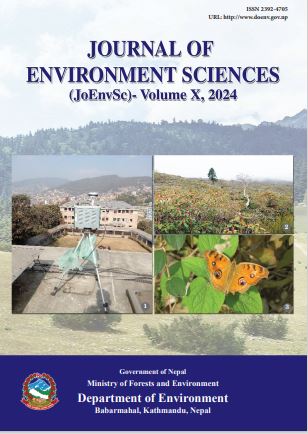Zoo from Visitors’ Perspective: Exploring the Role of Central Zoo, Nepal in Biodiversity Conservation with Emphasis on Conservation Education
DOI:
https://doi.org/10.3126/jes.v10i1.66968Keywords:
Conservation, perception, satisfaction, visitors, willingness to pay, Zoological gardenAbstract
Human induced wildlife loss is driving many species on the brink of extinction and conservation of those species in their native habitat is not sufficient in many cases, which provides the rationale for initiation and execution of ex-situ measures. Zoological gardens (in short zoo), are an important form of ex-situ conservation which can play a diverse role in complementing in-situ measures of conservation, research, conservation financing, captive breeding and conservation education. Among these roles, conservation education is one front where zoos can play a pivotal role which is poorly explored in Nepal. Thus, in this article we have attempted to assess the role of Central Zoo in conservation. For this purpose, the responses of the respondents were collected by using the standard questionnaire. Data were managed in Microsoft Excel and the percentage of the respondents for each response category was calculated. Association between the variables was explored by using Chi-square test. Respondents perceived that the information boards are sufficient but they need to be complemented by dedicated staff for visitors who read and write. Furthermore, respondents perceive that their conservation mindedness such as willingness to volunteer in nature based organisation and activities, willingness to make donations and support the wildlife friendly policies were significantly enhanced after their visit to the zoo. These behaviours were found to be significantly associated with the frequency of the visit as frequent visitors were found to have more positive attitudes towards wildlife and environment. Most of the visitors claimed that they were satisfied with the visit and are willing to visit again. However, they have suggested care on aspects of animal welfare and conservation education. The findings of this study are useful for the zoo management to improve the visitors’ experience while visiting their facility.




